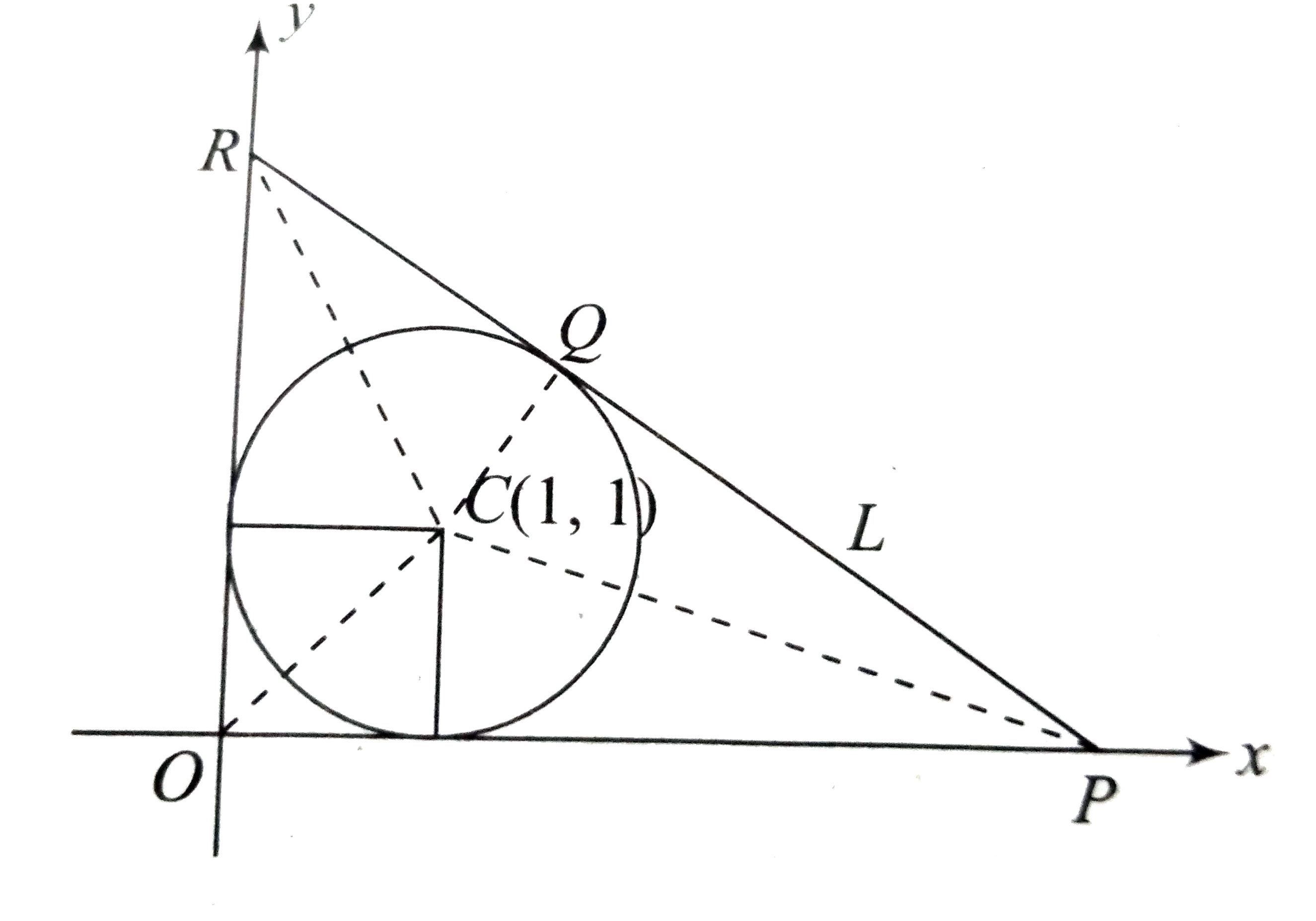If the angle of intersection of the circle x2+y2+x+y=0 and x2+y2+x−y=0 is θ , then the equation of the line passing through (1, 2) and making an angle θ with the y-axis is x=1 (b) y=2 x+y=3 (d) x−y=3Solution in Bengali
x=1
y=2
x+y=3
x−y=3
The correct Answer is:2
Let A and B be the centers and r1 and r2 be the radii of the two circles. Then ,
A≡(−12,−12),B≡(−12,12),
r1=1√2,r2=1√2
cosθ=r21+r22−AB22r1r2
=12+12−12×1√2×1√2=0
or theat=π2
Therefore, the required line is parallel to the x-axis and since it passes through (1,2), its equation will be y=2
Topper's Solved these Questions
- CIRCLE BOOK - CENGAGE PUBLICATIONCHAPTER - CIRCLE EXERCISE - Multiple Correct Anser Type
29 Videos
- CIRCLE BOOK - CENGAGE PUBLICATIONCHAPTER - CIRCLE EXERCISE - Linked Comprehension Type (For Problem 1-3)
3 Videos
- CIRCLE BOOK - CENGAGE PUBLICATIONCHAPTER - CIRCLE EXERCISE - CONCEPT APPLICATION EXERCISE 4.17
2 Videos
- BINOMIAL THEOREMBOOK - CENGAGE PUBLICATIONCHAPTER - BINOMIAL THEOREMEXERCISE - Comprehension
11 Videos
- CIRCLESBOOK - CENGAGE PUBLICATIONCHAPTER - CIRCLESEXERCISE - Comprehension Type
8 Videos
Similar Questions
about to only mathematics
View SolutionEach side of a square is of length 6 units and the centre of the square Is ( - 1, 2). One of its diagonals is parallel to x+y=0. Find the co-ordinates of the vertices of the square.
View SolutionThree concentric circles of which the biggest is x2+y2=1, have their radii in A.P If the line y=x+1 cuts all the circles in real and distinct points. The interval in which the common difference of the A.P will lie is:
View SolutionConsider a G.P. with first term (1+x)n, |x|<1, common ratio 1+x2 and number of terms (n+1). Let 'S' be sum of all the terms of the G.P., then
The coefficient of xn is 'S' is
View Solution
In the diagram as shown, a circle is drawn with centre C(1,1) and radius 1 and a line L. The line L is tangent to the circle at Q. Further L meets the y-axis at R and the x-axis at P in such a way that the angle OPQ equals θ where 0<θ<π2.
Coordinate of Q is
View SolutionFind the angle at which the circles x2+y2+x+y=0 and x2+y2+x−y=0 intersect.
View SolutionIf the angle of intersection of the circle x2+y2+x+y=0 and x2+y2+x−y=0 is θ , then the equation of the line passing through (1, 2) and making an angle θ with the y-axis is (A) x=1 (B) y=2 (C) x+y=3 (D) x−y=3
View SolutionThe circles x^2+y^2+x+y=0 and x^2+y^2+x-y=0 intersect at an angle of
View SolutionThe circles x^(2) + y^(2) + x + y = 0 and x^(2) + y^(2)+ x - y = 0 intersect at an angle of
View SolutionThe circles x^2+y^2+x+y=0 and x^2+y^2+x-y=0 intersect at an angle :
View SolutionFind the angle at which the circles x2+y2+x+y=0 and x2+y2+x−y=0 intersect.
View SolutionIf the angle of intersection of the circle x2+y2+x+y=0 and x2+y2+x−y=0 is θ , then the equation of the line passing through (1, 2) and making an angle θ with the y-axis is (A) x=1 (B) y=2 (C) x+y=3 (D) x−y=3
View SolutionIf the equation of the pair of straight lines passing through the point (1,1) , one making an angle θ with the positive direction of the x-axis and the other making the same angle with the positive direction of the y-axis, is x2−(a+2)xy+y2+a(x+y−1)=0,a≠2, then the value of sin2θ is
View SolutionThe equation of a line through the intersection of lines x=0andy=0 and through the point (2,2) is ............... A) y=x−1 B) y=−x C) y=x D) y=−x+2
View SolutionThe circle x^2+y^2+x+y=0 and x^2+y^2+x-y=0 intersect at an angle of :
View SolutionThe circles x^2+y^2+x+y=0 and x^2+y^2+x-y=0 intersect at an angle of
View Solution
